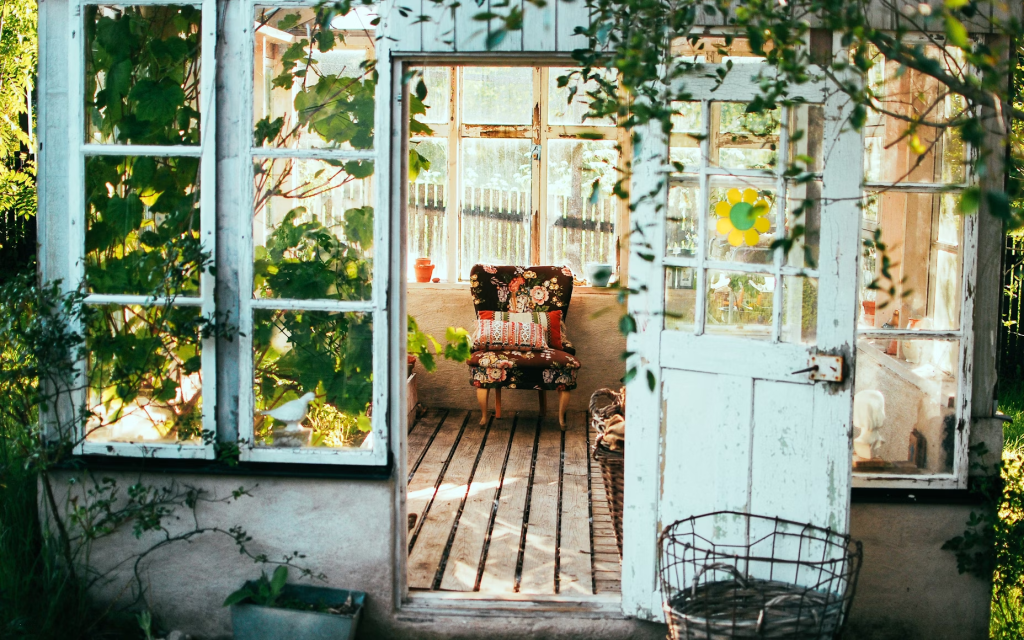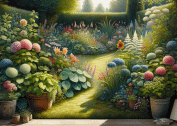Introduction
A beautiful garden can be a source of pride, a place for relaxation, and an extension of your home’s style. But creating a stunning outdoor space doesn’t have to be overwhelming. With just a few simple tweaks, you can Transform Your Garden with These Easy Tips and make it a welcoming haven for family, friends, and even wildlife. Whether you’re looking to add more color, enhance your garden’s layout, or improve its functionality, these practical ideas will help you achieve a professional look without a complete overhaul.

1. Plan Your Space: Start with a Vision
Before diving into planting and decorating, start by visualizing what you want your garden to look like. Are you aiming for a lush green retreat, a colorful flower garden, or a multifunctional space with seating areas? Having a clear vision will help guide your choices for plants, pathways, and decorations.
Steps to Create Your Garden Plan:
- Sketch Your Layout: Draw a rough layout of your garden, marking where you want flower beds, paths, and seating areas.
- Identify Focal Points: Consider adding a water feature, a large plant, or a garden sculpture as a centerpiece.
- Consider Plant Placement: Take note of sunny and shady areas to determine which plants will thrive in each spot.
Research by the Royal Horticultural Society shows that homeowners who plan their gardens in advance are 30% more satisfied with the final result compared to those who plant impulsively (Royal Horticultural Society, 2022).
2. Choose Low-Maintenance Plants for a Stunning Display
If you want your garden to look beautiful year-round without constant upkeep, opt for low-maintenance plants. These plants require minimal watering, pruning, and fertilizing, making them perfect for gardeners of all skill levels.
Best Low-Maintenance Plants:
- Lavender: Drought-resistant and known for its soothing fragrance.
- Hostas: Great for shady areas, with beautiful foliage that adds texture.
- Sedum: A hardy succulent that thrives in both hot and dry conditions.
According to Better Homes & Gardens, incorporating low-maintenance plants can reduce gardening time by 40%, making it easier to maintain a vibrant garden with less effort (Better Homes & Gardens, 2021).
3. Use Mulch for Healthier Soil and a Polished Look
Mulching is an easy and effective way to improve your garden’s appearance while promoting plant health. By adding a layer of organic or inorganic mulch around your plants, you’ll help the soil retain moisture, suppress weeds, and regulate temperature.
Types of Mulch to Consider:
- Organic Mulch: Includes wood chips, bark, and compost, which decompose and enrich the soil.
- Inorganic Mulch: Options like gravel or stones are great for pathways and areas that don’t require soil enhancement.
Mulching not only enhances the aesthetic of your garden but also improves soil health. The National Gardening Association states that mulching can reduce water usage by up to 50% and prevent soil erosion (National Gardening Association, 2021).
4. Create a Pathway for Structure and Flow
Adding pathways is a simple way to structure your garden and guide visitors through different areas. Paths also help prevent soil compaction by directing foot traffic away from plant beds. Whether you prefer a natural, rustic look or a more formal style, there are various materials to choose from.
Popular Pathway Materials:
- Gravel: Affordable and easy to install, perfect for a casual garden.
- Stepping Stones: Add a whimsical touch to cottage-style gardens.
- Brick or Flagstone: Ideal for formal gardens, providing a clean and structured look.
A well-designed path can transform your garden’s functionality and appearance. According to Garden Design Magazine, pathways are one of the most effective ways to increase the usability of outdoor spaces (Garden Design Magazine, 2021).
5. Maximize Small Spaces with Vertical Gardening
If you’re working with a small garden, vertical gardening is a great solution to maximize space. Vertical gardens use structures like trellises, wall planters, or hanging pots to grow plants upward instead of outward. This technique not only saves space but also creates eye-catching visual interest.
Best Plants for Vertical Gardens:
- Climbing Roses: Add a romantic feel to trellises and arbors.
- Herbs: Grow herbs like mint and thyme in tiered planters.
- Succulents: These low-maintenance plants look stunning in wall-mounted displays.
A study by the American Society of Landscape Architects found that vertical gardening can increase planting space by up to 50%, making it ideal for urban and small gardens (ASLA, 2021).
6. Add Lighting to Highlight Your Garden’s Best Features
Garden lighting can completely transform the ambiance of your space, making it usable and inviting even after the sun sets. Use a mix of lighting types to highlight specific features like flower beds, water fountains, or pathways.
Types of Garden Lighting:
- String Lights: Create a cozy, festive atmosphere around seating areas.
- Spotlights: Use these to illuminate large plants or garden art.
- Pathway Lights: Guide visitors along walkways for both safety and style.
According to Landscape Design Journal, adding garden lighting can extend the usability of your garden by up to 5 hours per day during the spring and summer months (Landscape Design Journal, 2021).
7. Attract Wildlife with Pollinator-Friendly Plants
If you want to create a vibrant, eco-friendly garden, consider planting pollinator-friendly flowers and shrubs. These plants attract beneficial insects like bees, butterflies, and hummingbirds, enhancing biodiversity and promoting a healthy ecosystem.
Top Pollinator-Friendly Plants:
- Echinacea (Coneflower): A favorite of butterflies and bees.
- Bee Balm: Attracts hummingbirds and is resistant to deer.
- Lupines: Add vertical interest and attract a variety of pollinators.
Creating a pollinator-friendly garden not only supports local wildlife but also boosts plant health through improved pollination. The Pollinator Partnership suggests that adding even a small pollinator garden can increase pollinator visits by 300% (Pollinator Partnership, 2022).
8. Incorporate Seating Areas for Relaxation
A garden isn’t just for plants—it should be a space where you can relax and enjoy the fruits of your labor. Incorporate seating areas, whether it’s a simple bench under a tree or a full patio set, to create a welcoming place to sit back and unwind.
Seating Ideas:
- Rustic Wooden Benches: Perfect for a natural or woodland-themed garden.
- Garden Sofas: Great for larger spaces that can accommodate more seating.
- Hammocks or Swings: Ideal for adding a touch of relaxation and fun.
By adding seating areas, you can make your garden a versatile space for both social gatherings and solitary relaxation.
Conclusion
Transforming your garden doesn’t have to be complicated. With these easy tips, you can create a stunning, functional space that reflects your personal style and meets your needs. From planning your layout to incorporating lighting and pollinator-friendly plants, each step will bring you closer to your dream garden. Start small, stay consistent, and watch as your garden becomes a beautiful, tranquil escape.
References
- Royal Horticultural Society. (2022). “Planning Your Perfect Garden Layout.” Royal Horticultural Society.
- Better Homes & Gardens. (2021). “Low-Maintenance Plants for Your Garden.” Better Homes & Gardens.
- National Gardening Association. (2021). “The Benefits of Mulching.” National Gardening Association.
- Garden Design Magazine. (2021). “Creating Pathways for Garden Flow.” Garden Design Magazine.
- American Society of Landscape Architects. (2021). “Maximizing Small Garden Spaces.” ASLA.
- Landscape Design Journal. (2021). “The Impact of Garden Lighting.” Landscape Design Journal.
- Pollinator Partnership. (2022). “Creating Pollinator-Friendly Gardens.” Pollinator Partnership.









